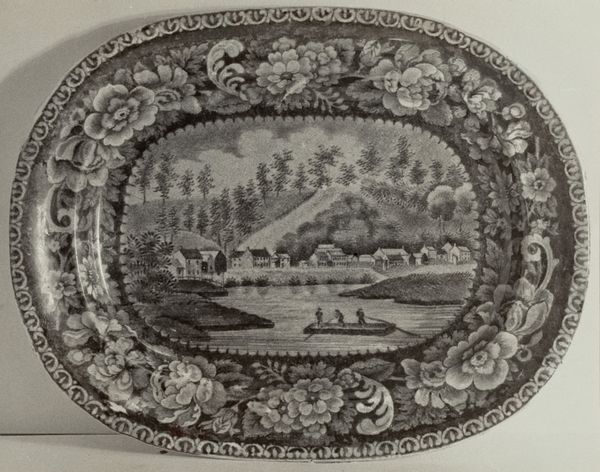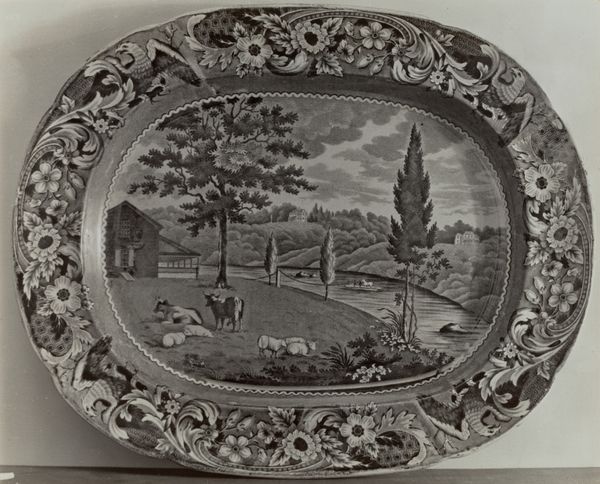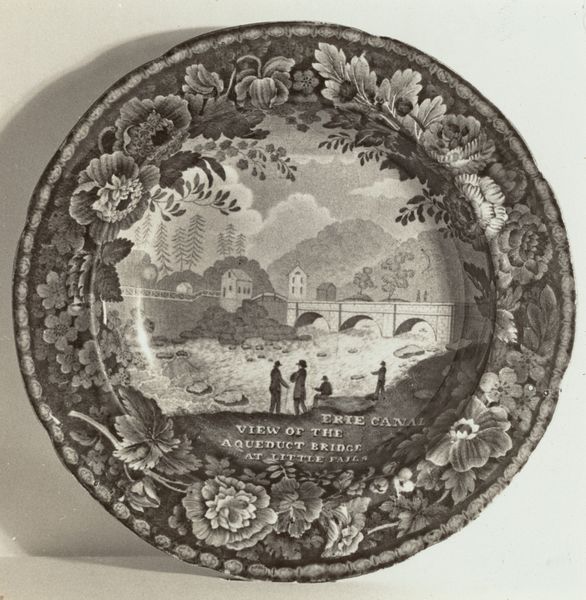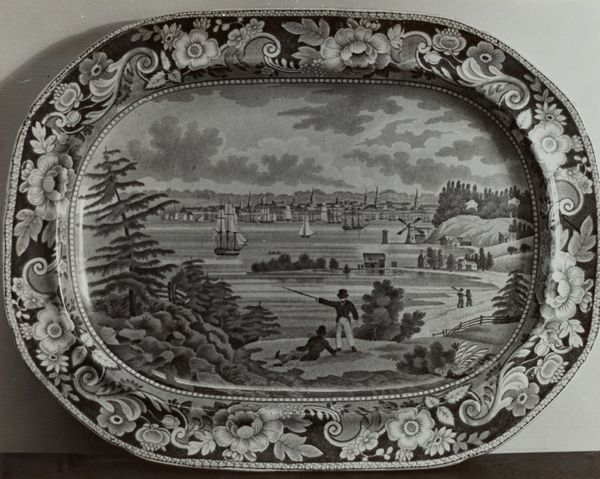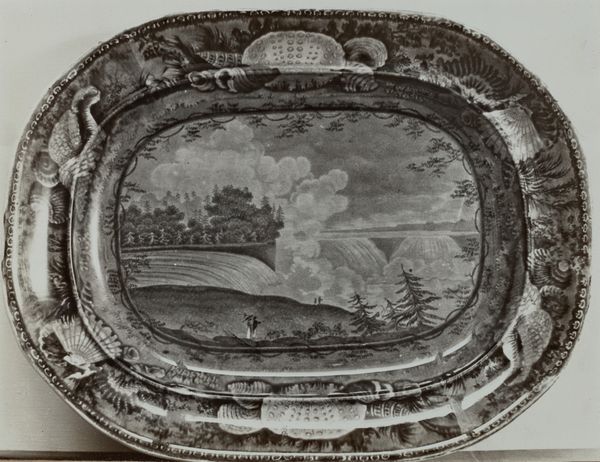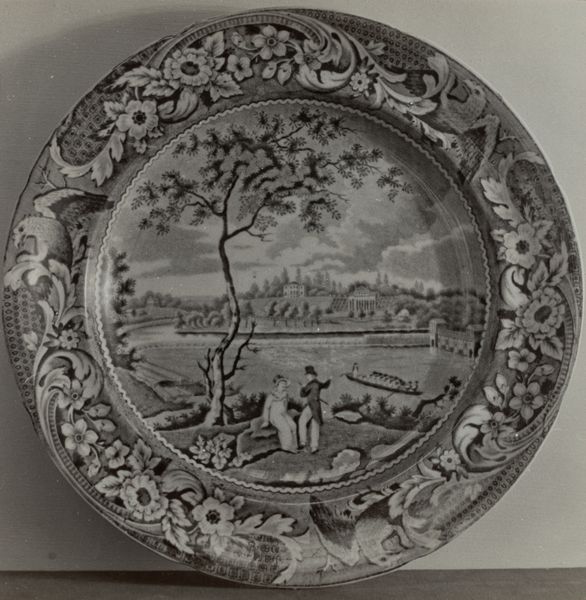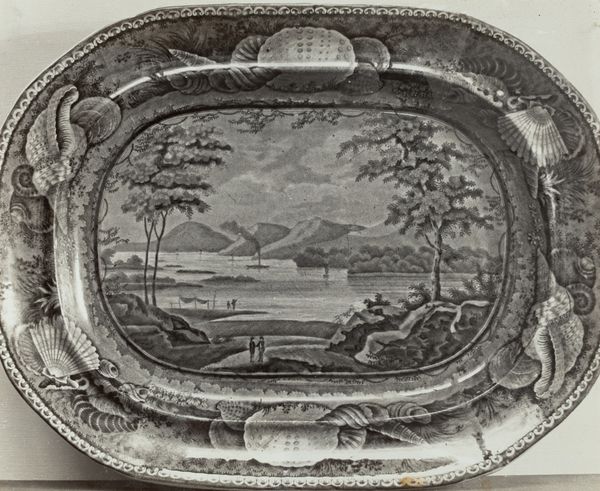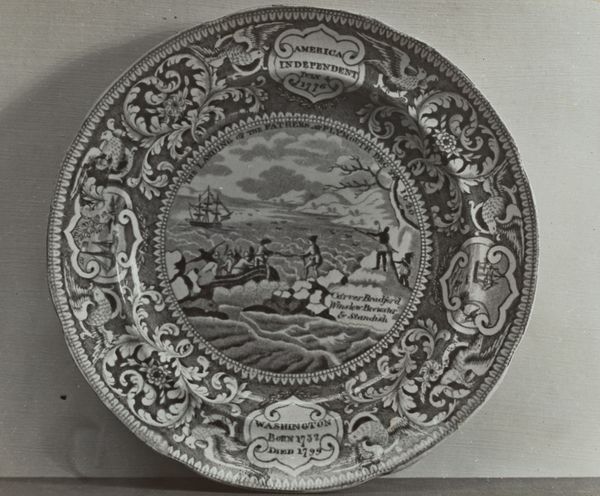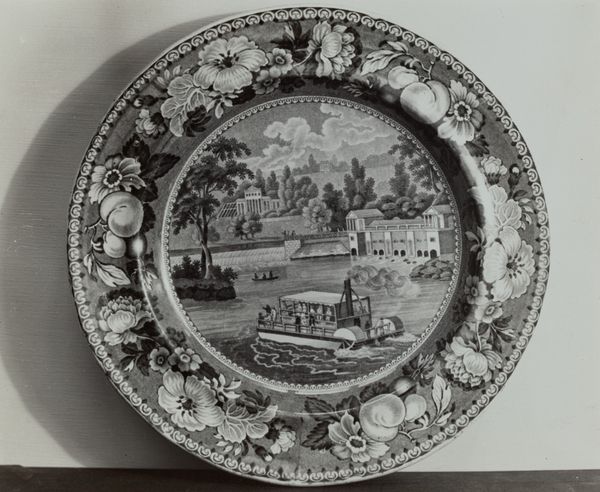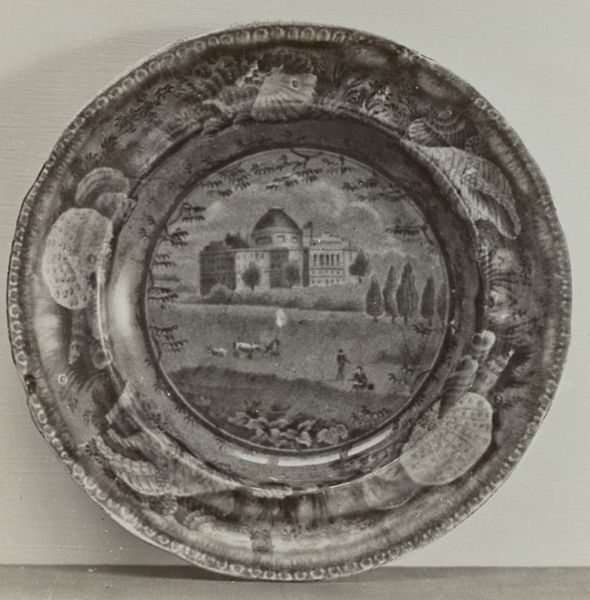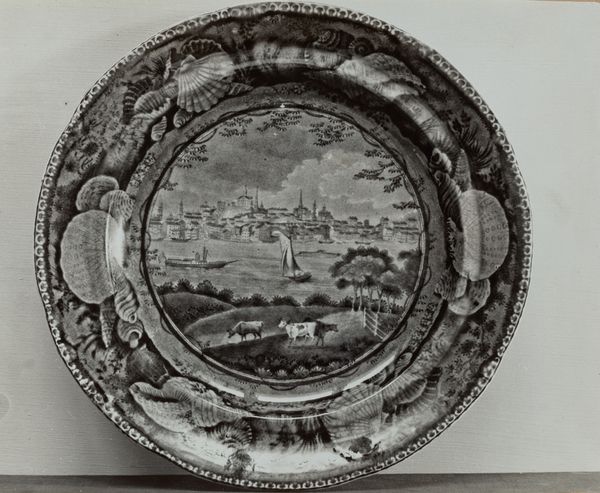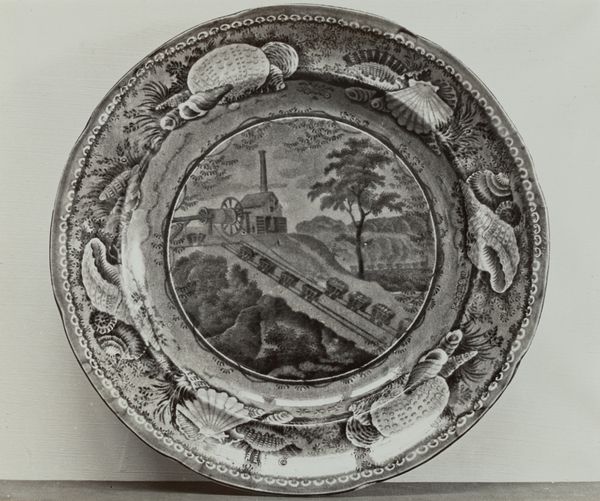
Dimensions: overall: 20.3 x 25.4 cm (8 x 10 in.) Original IAD Object: 10 3/16" long; 8 1/8" wide
Copyright: National Gallery of Art: CC0 1.0
Editor: So this platter, "Hudson River" from around 1936 by Helmut Hiatt, is quite intriguing. It's ceramic with a landscape scene, and I find its monochrome palette very calming. What jumps out to you when you look at it? Curator: What immediately strikes me is the complex interplay of landscape, craft, and history. While aesthetically pleasing, this platter prompts critical questions about the representation of the Hudson River School tradition within a domestic, decorative object. Consider its context. Created in the 1930s, during the Depression era, what kind of narratives about American identity and nostalgia is this piece potentially engaging with? Editor: That's a great point. I hadn't considered the social context of its creation. Are you suggesting that the commodification of landscape imagery, especially on a functional object, could be problematic? Curator: Precisely. The Hudson River School paintings were often monumental, intended to evoke awe and a sense of national pride, often masking the displacement of Indigenous peoples. Now, transpose that imagery onto a platter. Who is consuming this image, and what does it mean to literally digest a landscape imbued with such complex histories? The very act of using it engages you with the ongoing narratives of settler colonialism and environmental transformation. What kind of reflection might this prompt? Editor: I guess it's a reminder that even everyday objects can be deeply embedded in complex cultural and political landscapes. Curator: Indeed. And by recognizing that, we can start a critical dialogue about how we engage with art and its connection to our own position within these intersecting narratives. Editor: Thanks for that perspective, I will definitely view decorative art differently from now on! Curator: It was my pleasure! Hopefully, this conversation provides all with a more nuanced approach to seeing and understanding art in context.
Comments
No comments
Be the first to comment and join the conversation on the ultimate creative platform.
